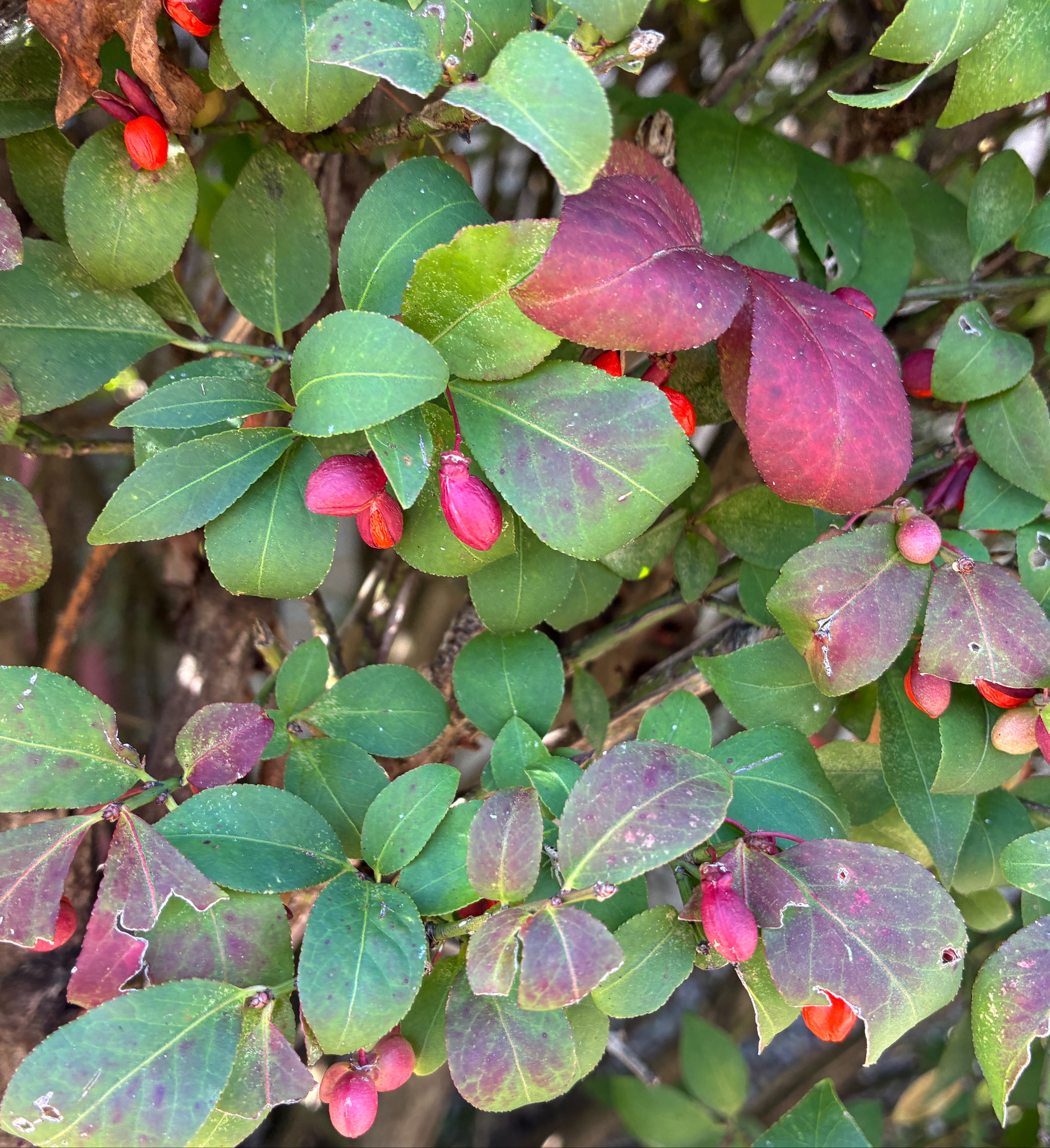
Photo Credits: Dr. Loretta W. Harvey
Scientific Name: Euonymus sp.
Common Name: Burning Bush, Wintercreeper, Strawberry Bush
Type: Deciduous or Evergreen shrub
Family: Celastraceae (Bittersweet Family)
Native Range: China, Japan, Korea
USDA Zone: Zones 4-9
Height: Highly variable: 1-20 ft.
Spread: Highly variable, often equal to or greater than height
Bloom Time: May to July
Bloom Description: Inconspicuous; small, 4-5 petaled flowers, greenish, small clusters in leaf axils.
Sun: Full Sun to Full Shade
Water: Medium (Prefers consistent moisture but is drought-tolerant once established.)
Maintenance: Low to Medium. Requires minimal pruning unless used as a hedge.
Leaf Type/Shape: Opposite, simple, elliptical to ovoid, 1–6 inches long, often with a finely toothed margin.
Attracts: Birds and small mammals
Other Info:
Tolerate: A wide range of soil types, variable soil pH, drought resistant, (once established), partial to full shade.
Invasive: High Risk for Non-Native Species. Several species are aggressive invaders: Euonymus alatus (Burning Bush), Euonymus fortunei (Wintercreeper), Euonymus europaeus (Spindletree)
Climate: Zones 4-9, Prefers consistent moisture but is drought-tolerant once established, wide range of soil types, variable soil pH, drought resistant, (once established), partial to full shade.
Noteworthy Characteristics: Spectacular Fall Color- intense scarlet to crimson-purple fall foliage; Showy Fruit- fruit is striking, often pink or crimson-red, split open in the fall to reveal bright orange or red-orange seeds encased in a fleshy layer called an aril; Winged Stems- non-native species E. alatus is easily identified by the unique, corky, raised wings that run lengthwise along the young stems; Versatility- The genus offers diverse forms, from dense, upright shrubs to sprawling, evergreen groundcovers and climbing vines, making them highly versatile in the landscape.
Problems: High Risk for Non-Native Species. Several widely planted non-native species are aggressive invaders: Euonymus alatus (Burning Bush), Euonymus fortunei (Wintercreeper), Euonymus europaeus (Spindletree); Pests: significant pest is the Euonymus Scale (Unaspis euonymi), which can heavily infest and eventually kill many species, especially the evergreen varieties. Other common problems include mites, aphids, and fungal leaf spots or mildew. Toxicity: All parts of Euonymus plants contain cardiac glycosides and other toxic chemicals and are considered poisonous if ingested by humans, potentially causing vomiting, diarrhea, and weakness.
Economic Uses: The genus Euonymus is primarily used for ornamental landscaping due to its attractive foliage, fall color, and showy fruit. Hedges and Screens- Dense growth habits make them excellent for privacy hedges and foundation plantings. Groundcover- Species like E. fortunei (Wintercreeper) are used extensively for erosion control and covering large open areas. Wood Products (Historical)- The European species, E. europaeus (Spindletree), was historically used to make spindles for spinning yarn, hence the common name.
Donated by:
In memory of:
Arboretum Catalog Number: 0010-B
Photo Credits: Dr. Loretta W. Harvey

